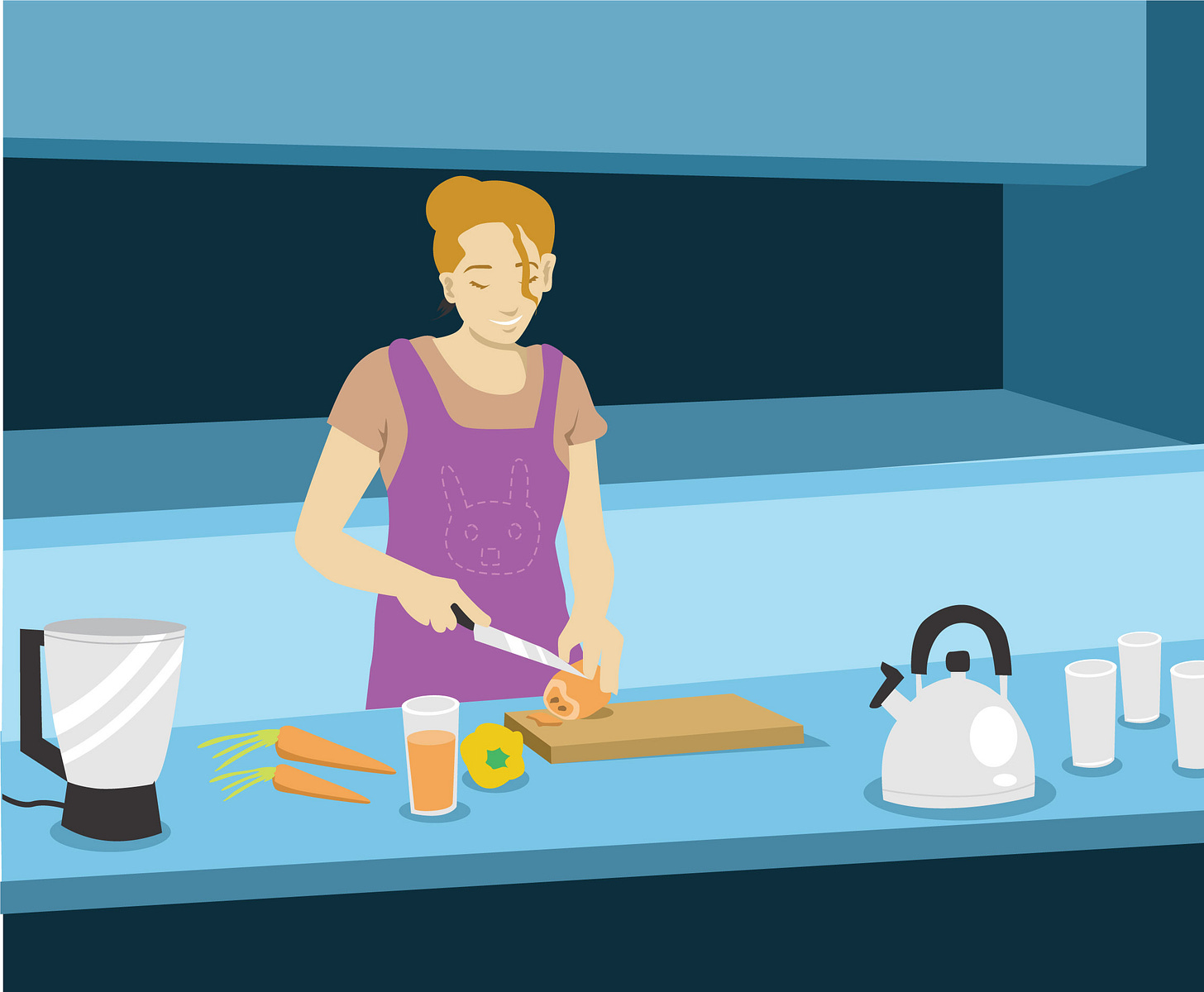Ever watched a chef stand in the kitchen and cook? Her feet are well-spaced, balancing her weight. Her shoulders aren’t hunched, but relaxed. Her elbows aren’t sticking out, but tuck themselves in like birds’ wings.
That’s the only way a chef will survive 40 hours of standing at a bench or a stove every week. If they don’t learn how to stand properly, they’re not going to make it.
Nobody really talks about this, and yet I catch myself, straining forward over the chopping block, tightly gripping a chef’s knife, or clenching my jaw, and I know there’s a ripple effect going on that’s going to end up at the chiropractor.
So in the interests of prevention rather than cure, and because I ain’t no expert on anyone but myself, this time I went to the chiropractor first. Lydia Feng treats patients at Sydney’s Health Space Clinics.
“I’ve treated quite a few chefs, and the main thing is you want to avoid anything like grabbing a heavy pot from a high shelf,” says Lydia. “There is also repetitive motion like whisking or peeling a whole bag of potatoes, which can bring on an underlying problem.”
So if you’re a chef, or you have a big cooking weekend coming up, here are a few tips to keep you safe and happy, with enormous assistance from Lydia.
# Wear supportive shoes. Cooking in bare feet may feel fancy-free, but you need support, balance and protection.
# Stand close to the prep bench and spread your feet until you feel comfortable and well-balanced. Settle in to your own weight. Relax your shoulders, they should not be around your ears.
# Check in with your jaw. Make sure your teeth aren’t clenched, your jaw is relaxed, and your chin is tucked in. “I see awkward posture in chefs all the time” says Lydia. “People tend to tense, and that travels to the neck, and you clench your jaw. You’d be far better off engaging your core.”
# Engage your core. Elizabeth Hewson, author of Saturday Night Pasta, has good advice on this, given her by her pasta teacher in Italy. “Tilt forward from your hips, not your back and start kneading the dough” she writes. “Pull in your belly button (imagine that are holding a blueberry in there) and start to knead the pasta. The power should be coming from your core, not your arms. Release your core as you exhale and tighten as you inhale.”
After one knead, she says, “make sure you roll your shoulders back again to reset. Take a sip of wine and continue”. (Thank you Lizzie - especially for assuming we all have a glass of wine by our sides, because of course, we do).
# Breathe. Drink water, stay hydrated, and take a break when you’re doing a marathon. “If you’re doing repetitive work, then stop for a short stretching session” advises Lydia. And if it’s really repetitive, like chopping an absolute pile of vegetables for a huge spag bol? “Delegate or automate” instructs Lydia. “If you’re doing any action more than 10 times a minute, it will put strain on that joint.”
# If you’re extra tall ( like me), consider raising the height of your counter top (and don’t cook in high heels). I have a beautiful round wooden chopping board that is a good 3 inches (7.5cm) deep, which really helps me stand up straight. “If you’re standing up nice and straight, and bend your elbows at ninety degrees, then your bench should be around 10cm below the level of your elbows,” suggests Lydia.
# Invest in good, well-balanced knives that you can grip easily, and make sure they’re sharp, so that they do the work and not you.
# Everything listed here goes double for when you’re doing the washing-up because the sink is deeper and you are leaning forward into it. The trick here – apart from getting someone else to do the dishes – is open the cupboard door beneath the sink, and place one of your feet on the lower shelf for balance as you lean forward. “And switch your feet occasionally” says Lydia. I’m a big fan of delegating or automating here.
# Sit down and take the weight off your feet when you can. Certain jobs are just as easily done at the table or on the couch – podding peas and broad beans, peeling potatoes for a gratin, peeling oranges for marmalade. You can treat your kitchen bench as you would a sit/stand desk, says Lydia, and alternate between sitting and standing.
Our bodies don’t like it when we’re standing for a long period of time, she says. “Cooking is hard work, and you need to take a break every now and then.”
Lucky there’s a great meal for us at the end of it, then.
Thanks to Lydia and Lizzie, and to you for reading! Jill
Copyright © 2020 Jill Dupleix. All rights reserved. I live and work on the lands of the Gadigal people of the Eora Nation, and pay my respect to elders past, present and emerging.
Food vector with thanks to freepic. Blueberries, stylist’s own.


